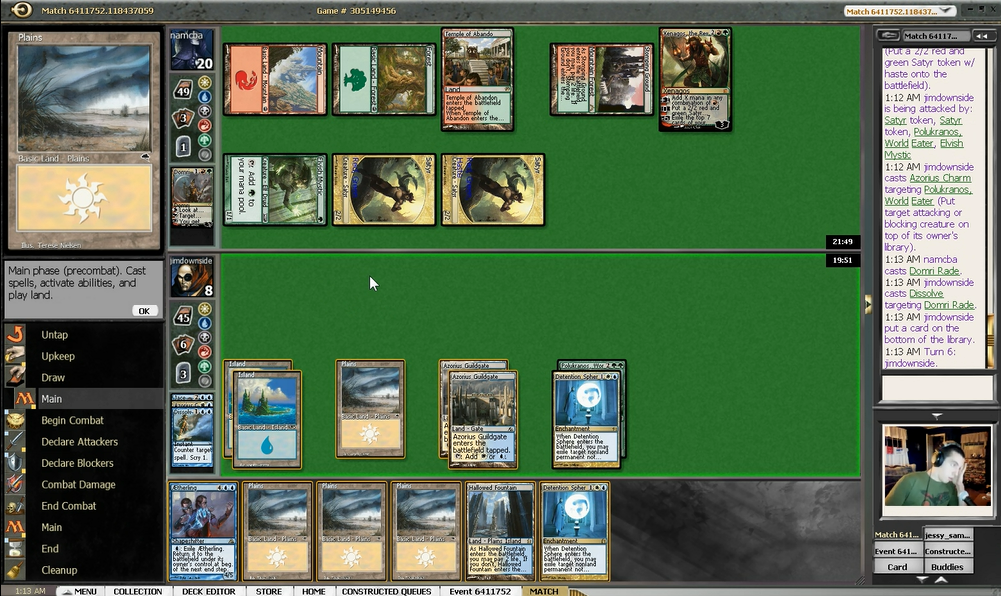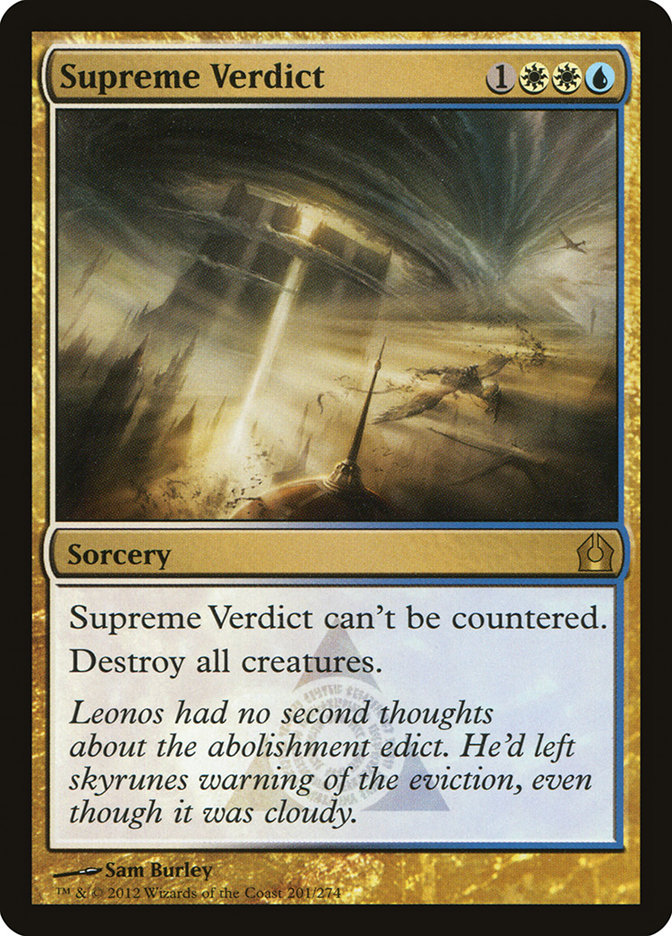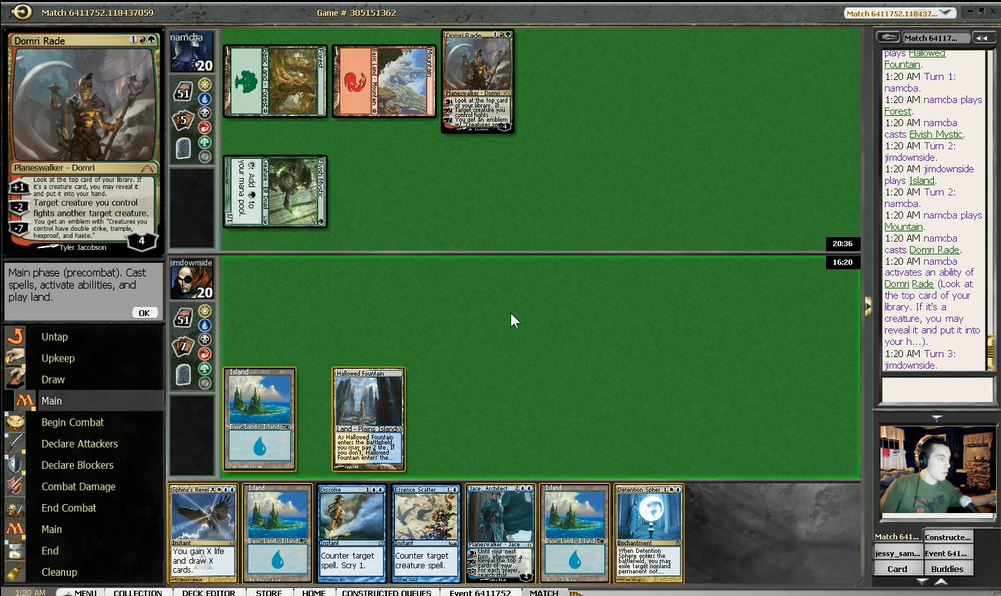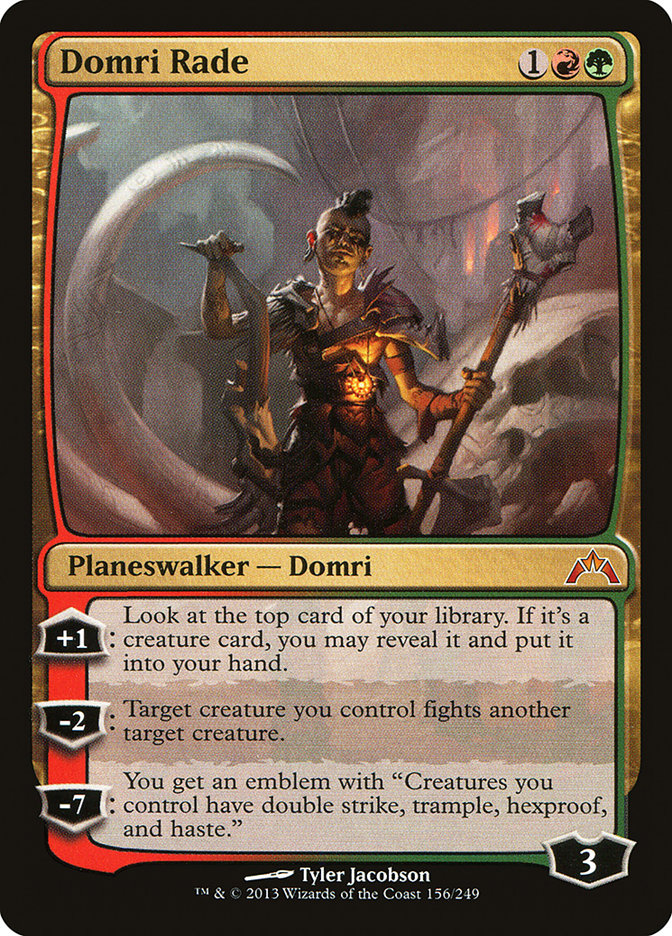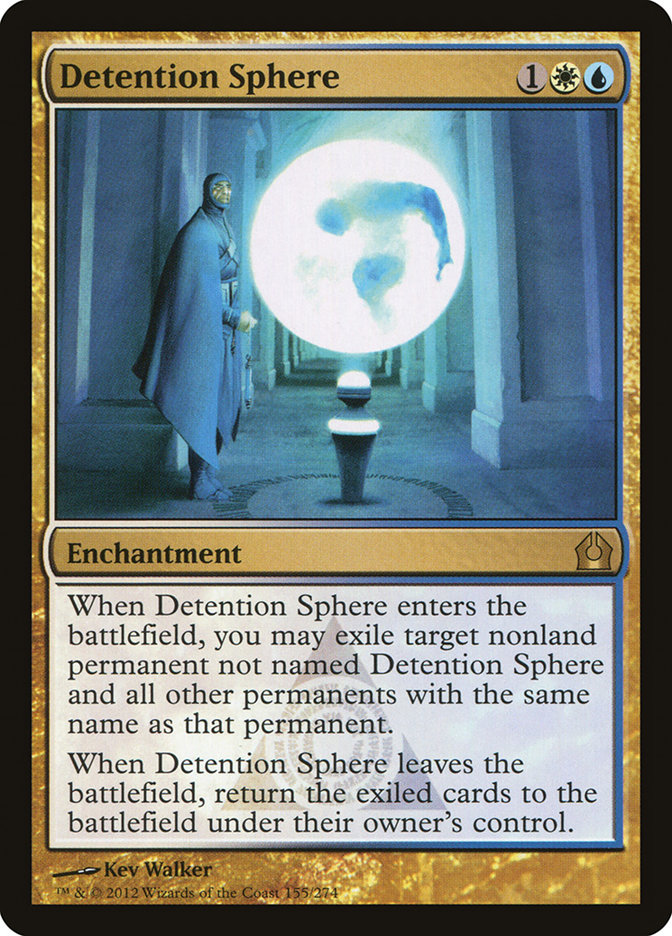Today we be gettin’ multimodal on yo ***es.
We’re testing Standard for the SCG Invitational in Las Vegas, and we’re starting with U/W Control as seen in last week’s article. We’re going to look at the deck on Magic Online and then play a match in a heads-up queue and see what we can glean from the match.
Creatures (2)
Planeswalkers (5)
Lands (27)
Spells (26)
- 2 Syncopate
- 2 Divination
- 2 Essence Scatter
- 4 Azorius Charm
- 4 Supreme Verdict
- 4 Detention Sphere
- 4 Sphinx's Revelation
- 1 Celestial Flare
- 3 Dissolve
Sideboard

Clearly not the ideal way to start our testing, but there are definitely lessons to be learned from this first match. At first glance this seems to be a somewhat weak matchup, but thankfully this sort of G/R beatdown/planeswalker deck has not been very popular at all due to the immense popularity of both Mono-Blue and Mono-Black Devotion decks. What I would really like to focus on is two turns in particular.
Game 1 clearly did not go very well. We kept a somewhat suspect hand and drew a number of lands, and at this point in the game it’s our first main phase on our sixth turn. We are at eight life and under pressure from both a number of creatures and a Xenagos, the Reveler. We also just Azorius Charmed a Polukranos, World Eater, which now resides on the top of our opponent’s deck. We draw a Detention Sphere and have to figure out how we are going to get out of this mess.
Playing To Your Outs
What’s important about this scenario and scenarios like it in general is that you must understand what your end goal is. Our goal is not to “stay alive as long as possible” but rather to figure out how we are going to win from this scenario. Even though we are very behind, winning the game is very much still our goal, and we need to figure out what needs to happen to get that done. This may involve drawing running outs, but if this is our only way to win, then we must play as if it’s going to happen.
Let me say this one more time because it’s really important. We need to figure out what would need to happen to win the game, no matter how unrealistic, and then make the plays that will allow for this chain of events to occur. This might also involve not only what we will draw but also what our opponents might or might not have.
Good players are very good at this, and that’s why they often seem very lucky.
So to have any chance to come back in this game, it’s pretty clearly going to involve drawing either a Supreme Verdict or an Elspeth, Sun’s Champion next turn. Let’s look at our three options:
- Cast Detention Sphere on the two Satyr tokens
- Cast Detention Sphere on Xenagos
- Cast Aetherling
Option one seems very bad if you look at our outs. It might save us life in the short term, but this deck does not play much if any burn. We can go to a lower life total to stabilize if need be.
Option two plays very well with us drawing a Supreme Verdict. While we will take five damage next turn and go to three, we will then either wipe the opponent’s current board or if they are foolish and play Polukranos, World Eater we can get that too and mop up with Aetherling. It does not jive as well with Elspeth, Sun’s Champion, as the Polukranos, World Eater will be able to eat the blocking tokens and take advantage of our low life total.
Option three is interesting. Playing a naked Aetherling is often counterintuitive, but this deck has almost no way to punish us for it. It can block, and we will still go to three life. But then if we untap and draw Supreme Verdict, we can unblockable Aetherling, attack Xenagos, phase out Aetherling , and cast Supreme Verdict all while having Aetherling to block and Detention Sphere for the Xenagos the turn after. We will still have to draw more gas, but we would be in pretty good shape.
In the video I made play two, but I think in hindsight perhaps option three might have actually been best. You can go very deep in analyzing a scenario like this, but for now I want to move on to my other scenario. This is a concept I will be revisiting in a future article.
This scenario is a little simpler. We keep a nice opening hand game 2 with a solid curve of two- and three-mana counterspells into a Jace, Architect of Thought. On the play a hand like this is very good unless . . .
Unfortunately for us he has the ideal opening, which is likely the only one our hand is ill-equipped to handle. But then we are just as fortunate since we draw . . .
I think this is a spot that many people would feel their happy fortune, slam down the Detention Sphere, and count their lucky stars that somebody up there likes them.
However, that would be a critical mistake.
Planning Your Turns
While that play might be correct if our hand was different, as it stands that play will likely lose us the game. Domri Rade is very good, and leaving it in play is not ideal for us. However, our current hand has two counterspells; no removal; and a Jace, Architect of Thought that we really want to stick. By tapping out on our turn 3 and allowing our opponent to play whatever large threat they see fit, we are endangering both our Jace and our chances to win the game.
While our opponent has added a Domri Rade to the board, they have not actually presented a threat yet. This is going to allow us to counter their first threat and then land our Jace, Architect of Thought mostly unopposed. While Domri may draw our opponent a card or two, we can wait to deal with it.
We can see more of this planning the following turn. We pass instead of casting our Detention Sphere, and when they cast Polukranos, World Eater, we have the option of using either Dissolve or Essence Scatter to counter it. Again, the quick choice would be to use Essence Scatter—it is a creature, after all, and Dissipate can hit a planeswalker or other noncreature threat later in the game. However, once again we need to look ahead. We are certainly casting our Jace the following turn, and then what? Most likely our turn 5 is going to be playing Detention Sphere on their Domri Rade, and we will have two mana left over. Not enough to Dissipate, but the perfect amount to cast Essence Scatter.
These sorts of sequencing issues are very important in general and absolutely crucial when playing a control deck.
While the match didn’t go as well as I would have liked, look at all the lessons we were able to take from it. Are you playing your matches critically enough?
Bonus Round
It’s Thanksgiving evening. You are literally stuffed so full of turkey you can barely fathom being alive, so you decide the best thing to do is join a special Onslaught/Legions/Scourge/Lorwyn/Morningtide/Eighth Edition/Odyssey Sealed Deck event. It’s your main phase.
What do you do?

